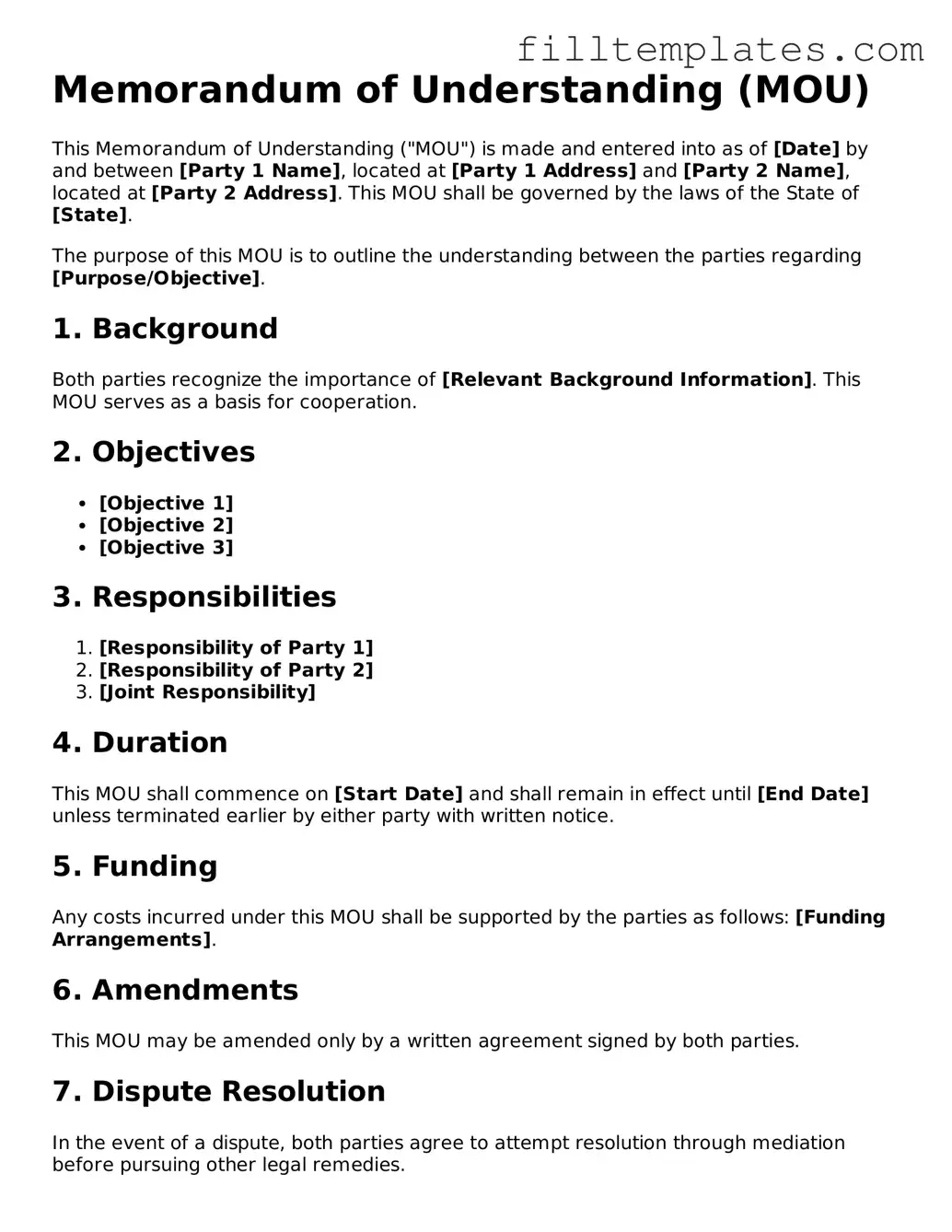Memorandum of Understanding (MOU)
This Memorandum of Understanding ("MOU") is made and entered into as of [Date] by and between [Party 1 Name], located at [Party 1 Address] and [Party 2 Name], located at [Party 2 Address]. This MOU shall be governed by the laws of the State of [State].
The purpose of this MOU is to outline the understanding between the parties regarding [Purpose/Objective].
1. Background
Both parties recognize the importance of [Relevant Background Information]. This MOU serves as a basis for cooperation.
2. Objectives
- [Objective 1]
- [Objective 2]
- [Objective 3]
3. Responsibilities
- [Responsibility of Party 1]
- [Responsibility of Party 2]
- [Joint Responsibility]
4. Duration
This MOU shall commence on [Start Date] and shall remain in effect until [End Date] unless terminated earlier by either party with written notice.
5. Funding
Any costs incurred under this MOU shall be supported by the parties as follows: [Funding Arrangements].
6. Amendments
This MOU may be amended only by a written agreement signed by both parties.
7. Dispute Resolution
In the event of a dispute, both parties agree to attempt resolution through mediation before pursuing other legal remedies.
8. Signatures
By signing below, both parties agree to the terms outlined in this MOU.
[Party 1 Name]
_____________________
Signature
Date: _______________
[Party 2 Name]
_____________________
Signature
Date: _______________
